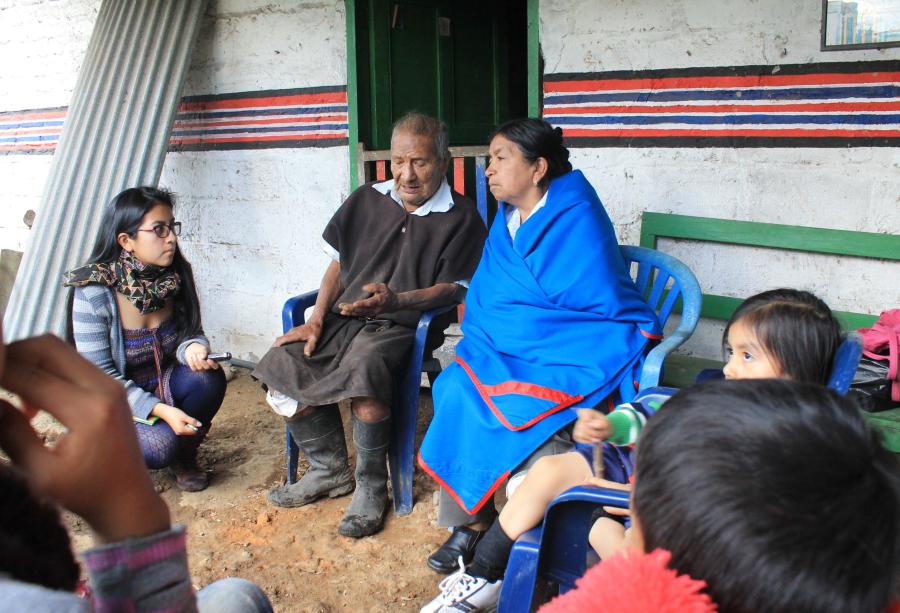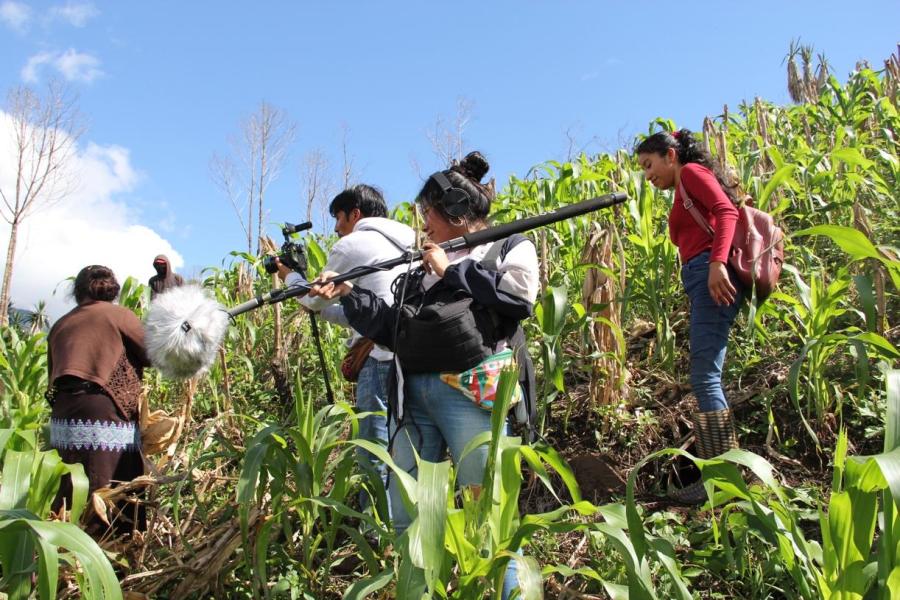
By Dr. Gleb Raygorodetsky
The devastating impacts of the COVID-19 pandemic around the world have brought into sharp focus the role of unsustainable global financial and economic systems in the emergence and proliferation of zoonotic diseases. The unbridled plunder of Nature in the name of economic growth at any cost—from deforestation, to habitat degradation and fragmentation, to climate change, to species extinction—push more and more people into direct contact and conflict with the animals that carry dangerous pathogens. However devastating, the global COVID-19 pandemic is just the tip of the iceberg of converging global crises—biodiversity loss, droughts, mega-fires, floods, rising temperatures, pollution, ocean acidification—in a world where we value economy over ecology, where greed supplants care, where “rights” blind us to responsibilities, where we worship a golden idol over Mother Earth.
In the depths of the pandemic, we feel like misbehaving children given the longest time-out ever to contemplate our bad behavior and try to grasp the meaning of the Nature’s message. We are torn between the desire to get back to “normal,” and a growing awareness of abnormalities inherent in the status quo that make us question our health care and food security, global trade and elderly care, social norms and education. More and more experts are calling on the global community to “build back better” after the pandemic by creating more sustainable and resilient societies and reimagining our place in this world. What might this look like?
“It's clear that the mode we've been practicing over the past 150 years has driven us into a ditch, and the last thing we want coming out of this COVID crisis is to get everything back going the way it was before the meltdown,” says Dr. David Suzuki, an award-winning Canadian geneticist, broadcaster, and author, speaking from his cabin on British Columbia’s Discovery Islands, which COVID-19 had turned from a weekend getaway into a refuge during months of self-quarantine. “The only people with the track record of having lived in balance with Nature are the Indigenous Peoples. We’ve got to recognize that now. Their way of seeing the world is radically different from the western capitalist growth-driven system. It’s rooted in a value system where we are utterly dependent on Nature. As we emerge from this pandemic, we must be guided by the examples and teachings of Indigenous Peoples practicing reciprocal obligations of responsibility to do everything possible to ensure that Nature can continue to thrive.”
The Great Disconnect
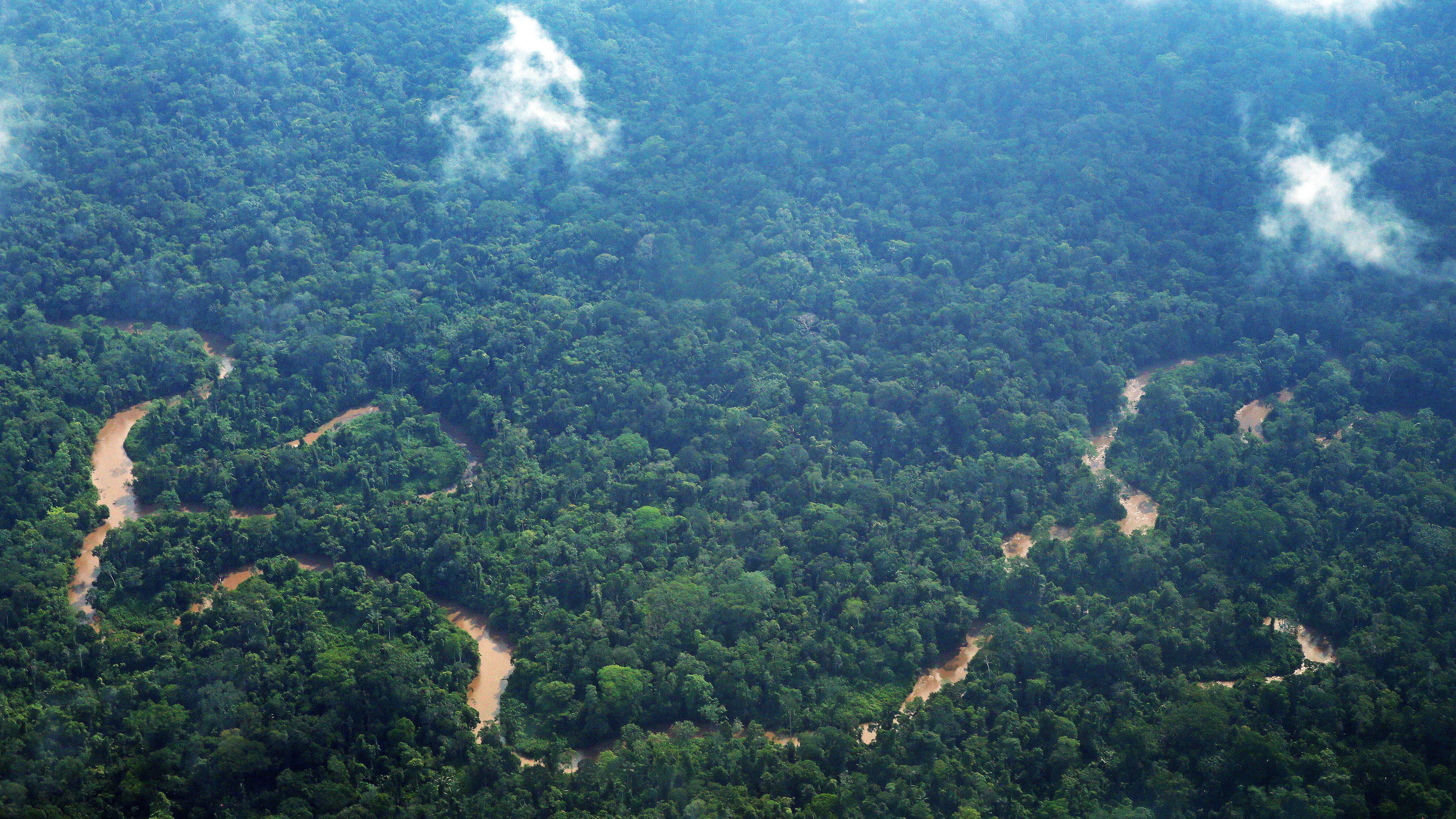
The bioculturally rich territory of the Indigenous Sápara people in the Ecuadorian Amazon. Photo © Gleb Raygorodetsky
“We’re running out of time and options, unless we immediately and fundamentally transform our relationship with Nature,” says Dr. Liette Vasseur, President of the Canadian Commission for UNESCO, reflecting on post-COVID recovery in light of the conclusions of The Global Assessment Report on Biodiversity and Ecosystem Services, released by the UN Intergovernmental Panel on Biodiversity and Ecosystem Services (IPBES) in 2019. The most comprehensive assessment of its kind, bringing together the best available knowledge from both Indigenous and scientific ways of knowing, the IPBES Assessment concluded that immediate transformative changes of economic, financial, and governance systems are essential to restore and protect Nature, including over one million species threatened with extinction. Though the report paints our planet’s future in dark tones, there are some hopeful signs that come from Indigenous Peoples and local communities who, for millennia, have relied on their holistic ways of knowing, doing, and being to safeguard Nature.
“The prevailing opinion that culture and Nature are somehow separate must become obsolete,” says Vasseur. “Such a deceptive view of culture-Nature disconnect is at the root of our utilitarian view of the world based on the infinite economic growth. But our planet, our Mother Earth, is finite. We have no other place to go. Because they have been living closely with Nature for generations, the Indigenous Peoples know how to live sustainably within planetary boundaries. We are realizing more and more that Indigenous knowledge and science must come together – we simply have no other choice.”
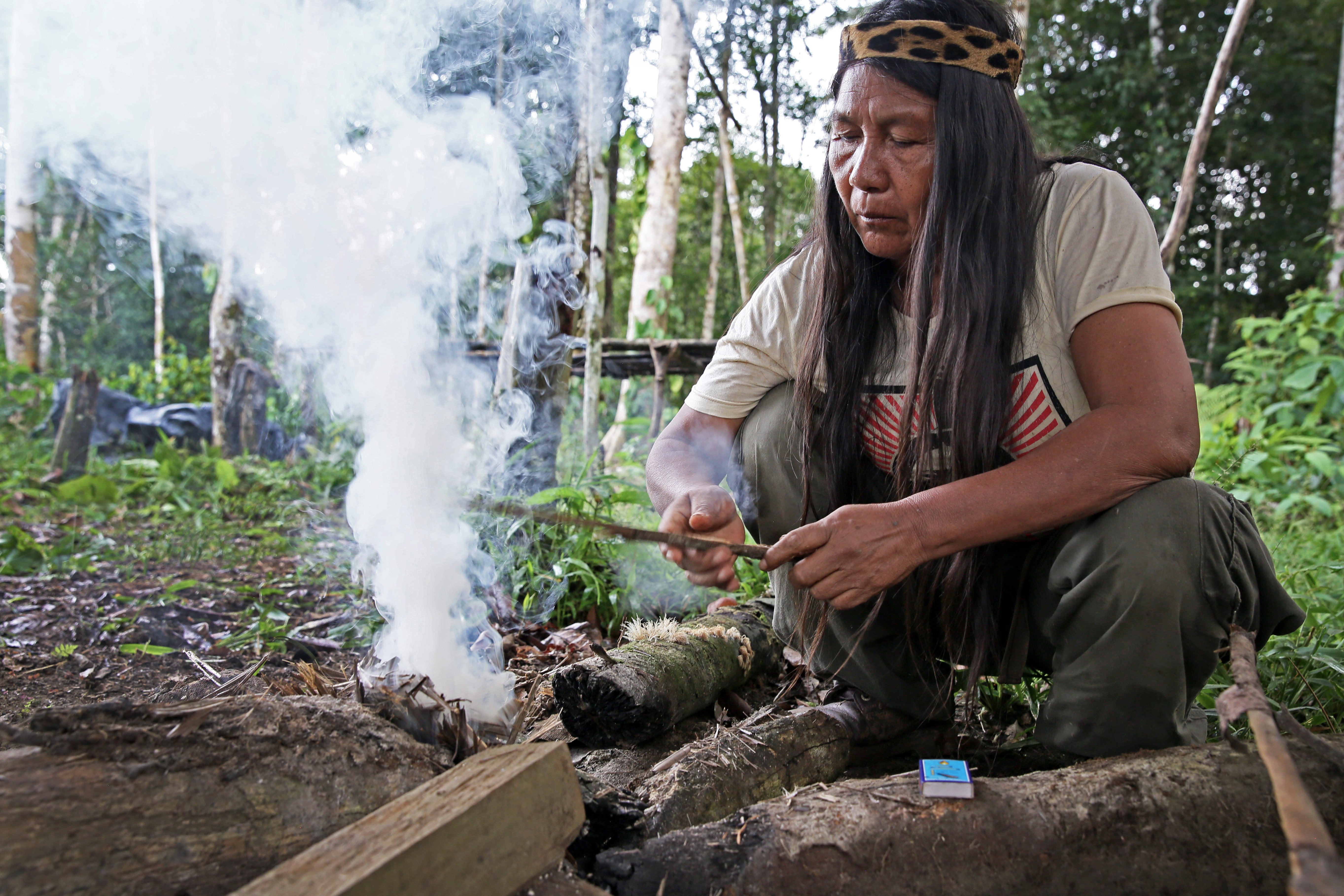
Amazon defender Gloria Ushiga has been leading struggles in defense of Sápara territory against fossil fuels, defense of language, and women's rights. Photo © Gleb Raygorodetsky
Proven stewards of global biological and cultural heritage, the Indigenous Peoples have sustained respectful and reciprocal relationships with the natural world without undermining its life-sustaining functions for millennia. Despite the unrelenting assault of the “developed” world on the living planet, more than a quarter of the global land area continues to be traditionally owned, managed, or used by Indigenous Peoples, with some of the world’s most biologically and culturally diverse areas found within their ancestral territories, like those of Sápara people in Ecuador, or Karen people in Thailand.
“Working on reconciling culture and Nature is our priority,” continues Dr. Vasseur, “A big part of it is advancing reconciliation with Indigenous Peoples, youth, and women in all aspects of Canadian Commission for UNESCO’s work, including reconciliation with Indigenous ways of knowing that see culture and Nature as inseparable.”
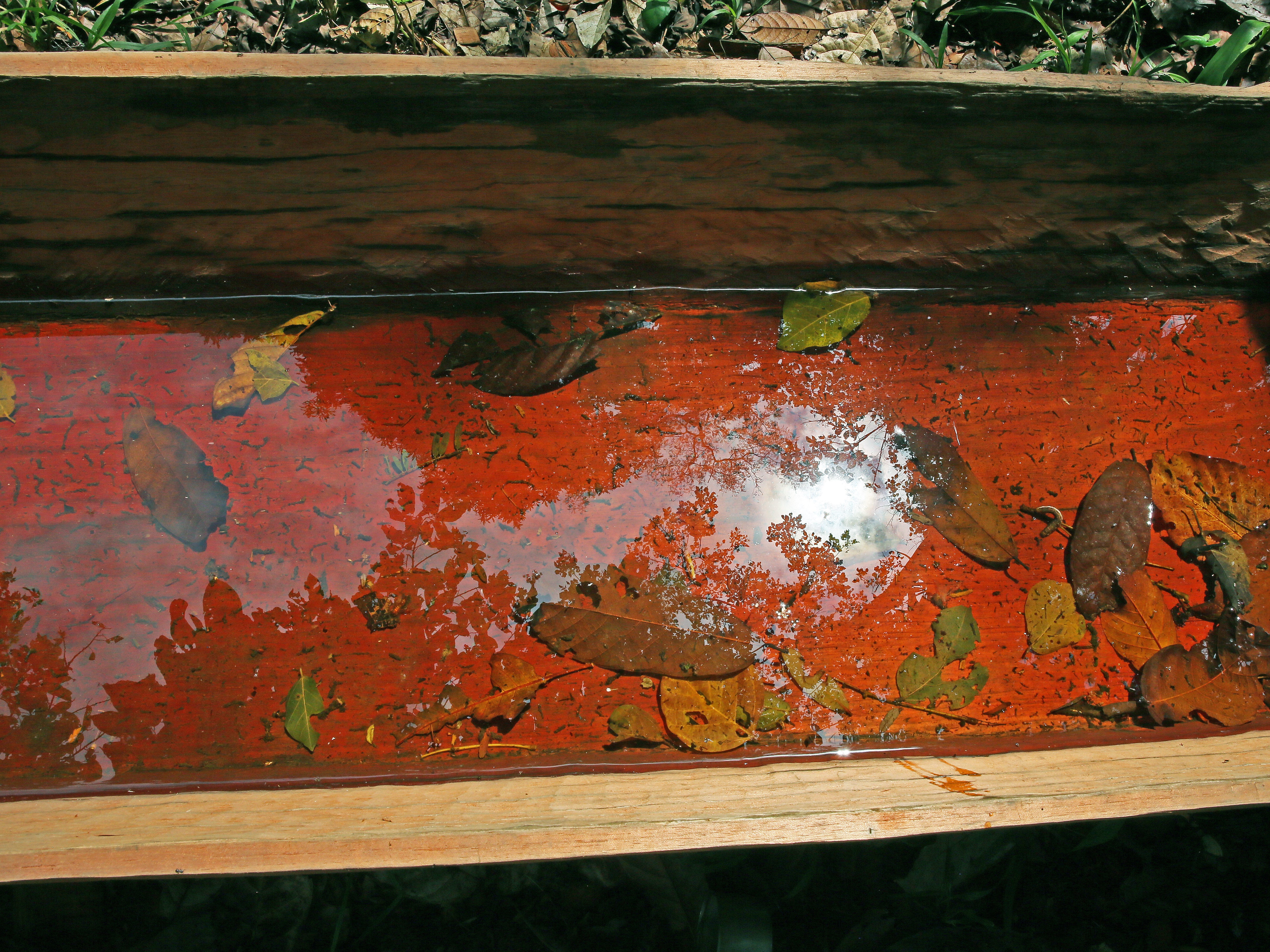 Amazon rainforest reflected in rainwater filling a Sápara dugout canoe, Ecuador. Photo © Gleb Raygorodetsky
Amazon rainforest reflected in rainwater filling a Sápara dugout canoe, Ecuador. Photo © Gleb Raygorodetsky
Indigenous ways of knowing, doing, and being are increasingly recognized as integral in our responses to global pandemics, climate change, biodiversity loss, and ecosystem degradation. As we attempt to reimagine our place in Nature in the face of escalating and converging crises, it behooves us to learn from our Indigenous brothers and sisters how to heal the culture-Nature divide. We may learn from the Quechua people protecting traditional varieties of potato in Peru, for example, how to reconcile our relationships with the plants of our world. We might learn how to reconcile our relationship with animals by looking to the Kainai First Nation in Canada who are repatriating buffalo back to their traditional territory. We could learn from the Aboriginal Traditional Owners in Australia reviving their ancestral relationship with fire, how to reconcile our relationship with Nature’s elements. And we can learn how to restore our intimacy with all our relations from the Moriori people of New Zealand maintaining their ancestral traditions of peaceful coexistence with all living beings. Only by recognizing the timeless values of these lived experiences and applying these lessons to our own ways of knowing, doing, and being, can we ever hope to reimagine “normal” in post-COVID world, and “build back better.”
Reconciling with Plants
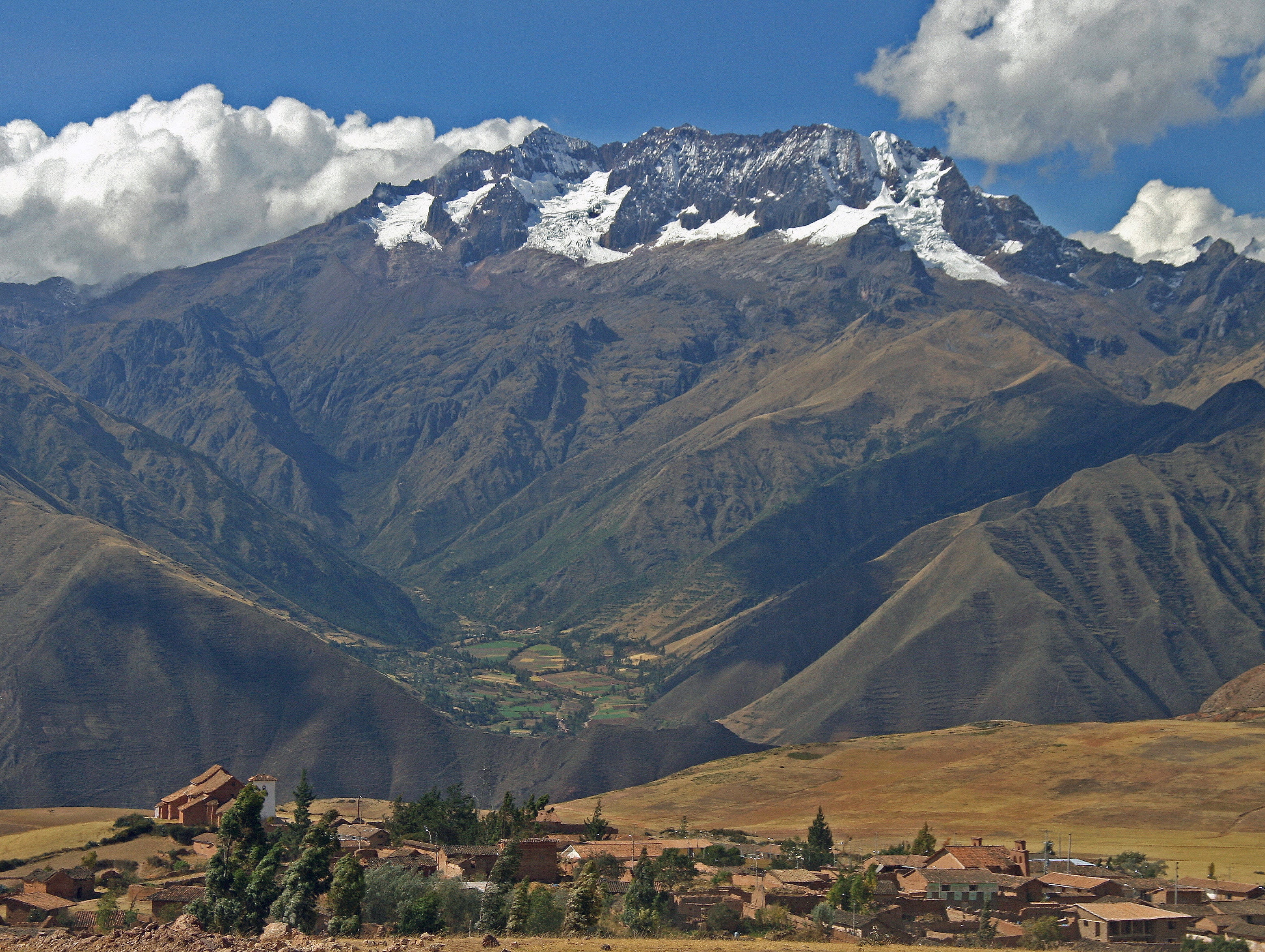 Situated in the heart of Peruvian Andes, twelve miles north of Cusco, the Urubamba Valley, known as the Sacred Valley of the Incas, is a long-recognized hotspot of biological diversity. Photo © Gleb Raygorodetsky
Situated in the heart of Peruvian Andes, twelve miles north of Cusco, the Urubamba Valley, known as the Sacred Valley of the Incas, is a long-recognized hotspot of biological diversity. Photo © Gleb Raygorodetsky
Wisps of steam rise from the starchy flesh of freshly baked potatoes, the charred parchment of their skins split open. The vapor mixes with the ringlets of smoke lingering over the blackened clumps of the huatia, the traditional oven conjured from earth, then broken up when the cooking is done.
A stocky Quechua farmer stands over the steaming heap of baked tubers and upturned smoldering earth. Embellishing his woolen poncho and beaded ear-flapped hat, or chullo, are rainbow-colored depictions of the surrounding altiplano landscape and its inhabitants.
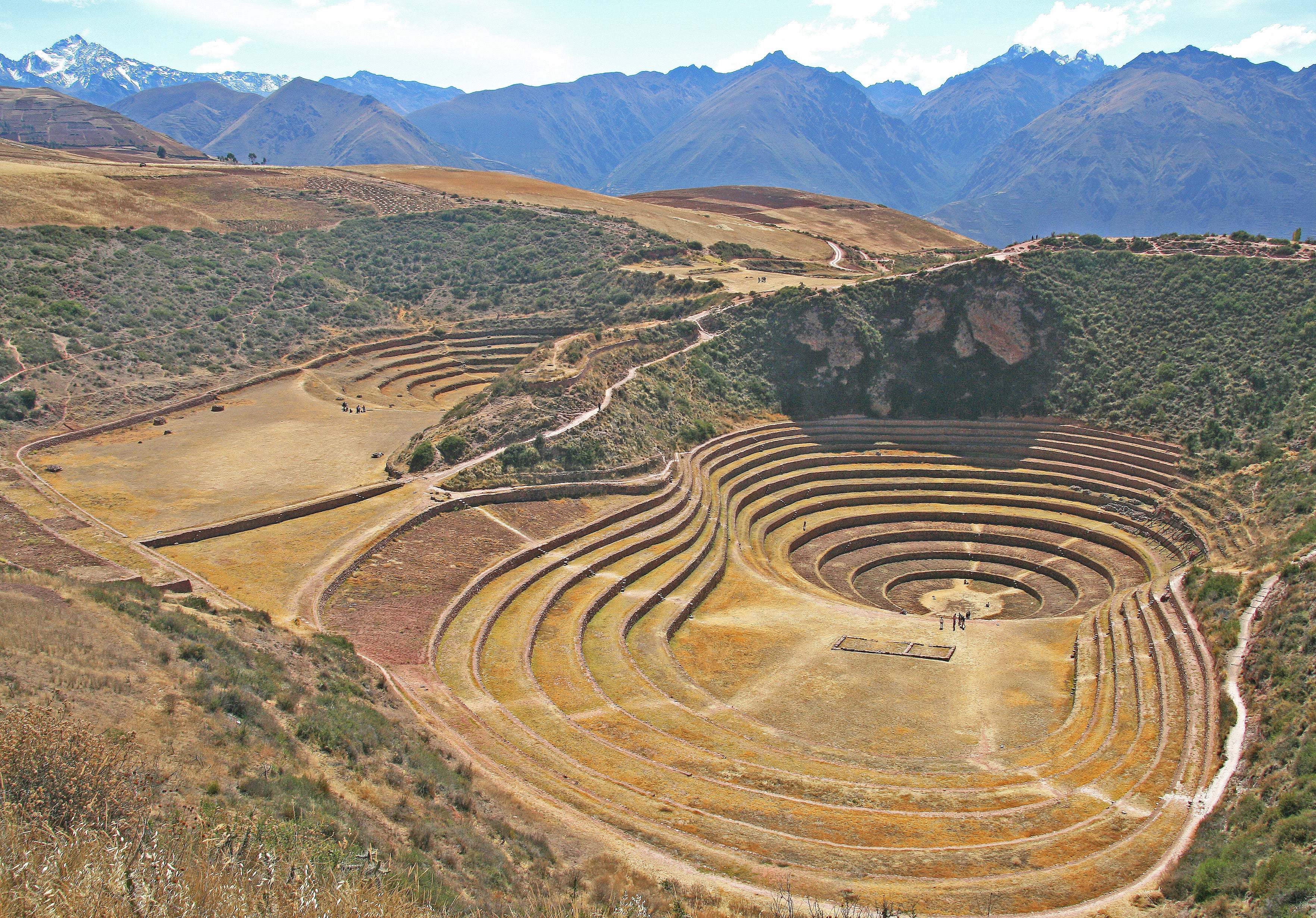 One of the most visually stunning Inca ruins is an archaeological site in Peru near Moray. It is believed that the Incans used Moray to conduct experiments on the effect of different climates on a variety of crops. Photo © Gleb Raygorodetsky
One of the most visually stunning Inca ruins is an archaeological site in Peru near Moray. It is believed that the Incans used Moray to conduct experiments on the effect of different climates on a variety of crops. Photo © Gleb Raygorodetsky
The farmer raises both hands in greeting to the snow-covered peaks, offering the traditional k’intu—three leaves from the sacred coca plant firmly gripped in his fingers. He gives thanks to the Apus – the mountain spirits that look after his homeland, the Urubamba Valley. He then expresses gratitude to Mother Earth for looking after all his relations, from rocks to trees, from llamas to springs, from glaciers to the potato.
Situated in the heart of Peruvian Andes, twelve miles north of Cusco, the Urubamba Valley, known as the Sacred Valley of the Incas, is a long-recognized hotspot of biological diversity. For over three thousand years, the local Quechua people have looked after the region’s agrobiodiversity—the intricate web of relationships between local people, domesticated species of plants, their wild ancestors, and the ecosystems all depend on. The Quechua stewardship of these montane landscapes is grounded in sophisticated Indigenous systems of knowledge and innovation, rooted in the profound understanding of, and reverence for, Pachamama, or Mother Earth.
The area is home to a wide range of Andean food crops, such as quinoa, lima beans, peppers, yucca or manioc, squash, and maize. Significantly, this birthplace of the potato continues to nurture eight known wild species and 1,340 locally recognized, named, and cultivated varieties of the plant.
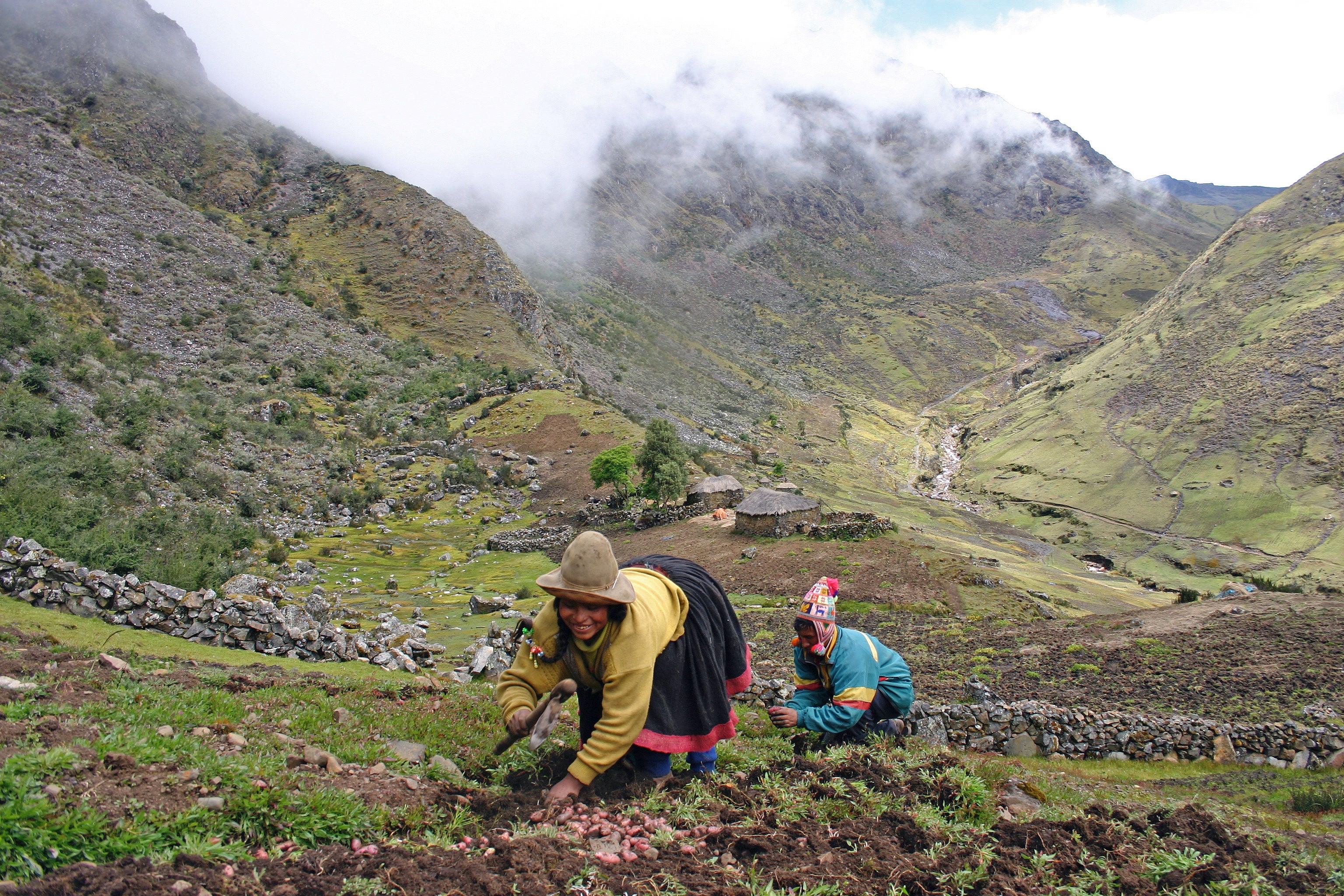 Q’eros potato farmers work the high slopes of the Andes of Peru, above the village of Cochomoqo. Photo © Toby McLeod
Q’eros potato farmers work the high slopes of the Andes of Peru, above the village of Cochomoqo. Photo © Toby McLeod
In 2005, six local Quechua communities partnered with the Peruvian non-governmental organization Asociación ANDES to set aside 9,280 hectares of the Urubamba Valley as the Potato Park in order to protect this vital source of sustenance and wellbeing for future generations. To strengthen their traditional collective rights to the biological and cultural wealth of their territory, the local Quechua communities have collaborated with the Asociación ANDES in governing the Potato Park as a globally recognized Indigenous Biocultural Heritage Area (IBCHA) that advances a unique holistic model of bridging conservation and sustainable use of agrobiodiversity in pursuit of Sumak kawsay.
“Sumak kawsay is a Quechua holistic term for good living,” explains Alejandro Argumedo, Program Director of the Asociación ANDES. “We achieve good living when the runas realm of people and their domesticated crops and animals, the sallka realm of wild plants and animals, and the sacred auki realm of the spirits, like apus, exist in balance that’s maintained through the practice of ayni, or sacred reciprocity.” This is at the heart of our biocultural heritage.
“Biocultural heritage,” Argumedo describes, “is rooted in local practices of sharing economy and equitable governance of resources, based on local ethics, values and livelihoods, which are largely overlooked in the dominant top-down development. In the Potato Park, people respect the authority of the sacred Apus in maintaining wellbeing of their entire community – plants, animals, water, and rocks. The Apus ensure that water is plentiful, pastures are healthy, and seeds are potent. They are integrated into human daily activities and are communicated with, through rituals and offerings. People recognize that they have water because of the work of the Apus. If pastures dry up, it’s because the Apus are not doing their job and the local shamans need to step in to remedy the situation.”
“We must reclaim Indigenous biocultural landscapes that have been sacrificed to global capital and industrial agriculture,” Argumedo continues. “We need to restore them to localized economies and food systems, as we reimagine how we see ourselves in the Natural world. It is critical because these highly diverse agricultural systems include immune-boosting crops and medicinal plants that heal the body and the spirit, and are a source of ethical behavior that is very much needed at this time.”
Reconciling with Animals
 Bison. Photo © Jack Dykinga
Bison. Photo © Jack Dykinga
For millennia, the vast expanse of Turtle Island, as North America is known to many of the continent’s Indigenous Peoples, was a bioculturally rich landscape shaped by the mutualistic relationships between Indigenous Peoples and plains bison, or buffalo. From the end of the Pleistocene to the time before European colonization, the multi-million-strong buffalo herds grazed the prairies, tilled the soils, and wallowed in the dirt across the Great Bison Belt – the immense tract of grasslands stretching from the Gulf of Mexico to the Rocky Mountains.
As a cultural keystone species, the plains bison was the nexus of the intricate and resilient web of relationships between the continent’s soils, plants, insects, birds, mammals, and Indigenous Peoples. With the arrival of European settlers in the 19th century, this biocultural system began to degrade, with bison herds virtually eradicated and Indigenous Peoples that depended on them greatly diminished and displaced to make room for railroads, settlers, and cattle.
Today, the enduring vestiges of the former bison range found on both sides of US-Canadian border are small and disconnected. Without the bison as the keystone species, the prairie ecosystems have lost their resilience. Without the bison as the cultural keystone species, the Indigenous Peoples’ well being has also eroded.
“The disappearance of iconic symbols in a society means the beginning of the disappearance of a culture,” explains Dr. Leroy Little Bear, a respected Kainai elder, Blackfoot scholar, a professor emeritus at the University of Lethbridge in Alberta, and an Officer of the Order of Canada. “Imagine what would happen to Christians if all Christian crosses and churches were gone. The disappearance of the buffalo had a similar devastating effect on our people. Our youth now hear our buffalo songs, stories, and watch our ceremonies, but they do not see the buffalo roaming around.”
The essence of the Blackfoot way of knowing, doing and being is based on interrelatedness and interdependence of Iinniiwa (buffalo in Blackfoot) and Sokitapiwa (people of the Plains). A number of Indigenous nations and their allies have been working on bringing buffalo back to their traditional territories, to restore the human-bison biocultural landscape and revive culture-Nature connection.
In 2009, a small group of Kainai elders, led by Dr. Little Bear, embarked on a series of US-Canada transboundary “buffalo dialogues.” Supported by the Wildlife Conservancy Society (WCS), the dialogues involved Kainai, Siksiika, Piikani and Amskapi Pikuni First Nations, and lead to the creation of Iinnii Initiative aimed at strengthening cultural, spiritual, and ecological connections with the land and wildlife through the repatriation of the Iiniiwa. In September 2014, several participants of the Iinnii Initiative signed the transboundary Buffalo Treaty “to welcome buffalo to once again live among us… to nurture each other culturally and spiritually.” Today, close to thirty Indigenous nations on both sides of the US-Canada border have signed on to the Treaty.
“In our stories, Nappi-the-trickster hid buffalo from our people because they were not treating buffalo very well,” says Little Bear. “Our prophecies tell us that those buffalo will return from the mountains. This is where we are working now under the Buffalo Treaty to bring buffalo back.”
“We are bringing buffalo back not for subsistence,” continues Little Bear, “But for the spiritual and cultural rebirth of our peoples. Once the buffalo return, they take care of us by helping us spiritually, as well as bringing ecological balance to the land. Buffalo is the best environmentalist you can have. Wherever buffalo is, the birds and the plants you haven't seen for a long time end up coming back.”
Prominent conservation organizations like the WCS, the Nature Conservancy, and the WWF are documenting ecosystem and biodiversity benefits from bison reintroductions. Bison grazing and wallowing creates a rich mosaic of diverse habitats beneficial to ground-nesting birds like burrowing owls; insects like dung beetles; rodents like deer mice and black-tailed prairie dogs; and carnivores like swift fox and endangered black-footed ferret. The benefits to Indigenous Peoples are just as transformative.
“Bringing buffalo back makes our culture stronger, revitalizing it,” Little Bear continues. “The buffalo is important for our language. Not only did we have ways of describing all the parts of the buffalo used for subsistence, but also ways of talking about their feeding habits, where they roam, their seasonal movements, their spiritual aspects, and economic worth. Our songs, stories, and ceremonies are interwoven with the spirit of the buffalo. The Blackfoot Buffalo Women Society and the Horns Society are examples of the spiritual importance of the buffalo to the Blackfoot, and they are continuing to this day.”
“It’s a dream of our elders, to once again see the buffalo roam on the prairies,” says Little Bear. ”Our elders told us that though there might be only few living bison left, the spirit of the Buffalo never left.”
Reconciling with Plants
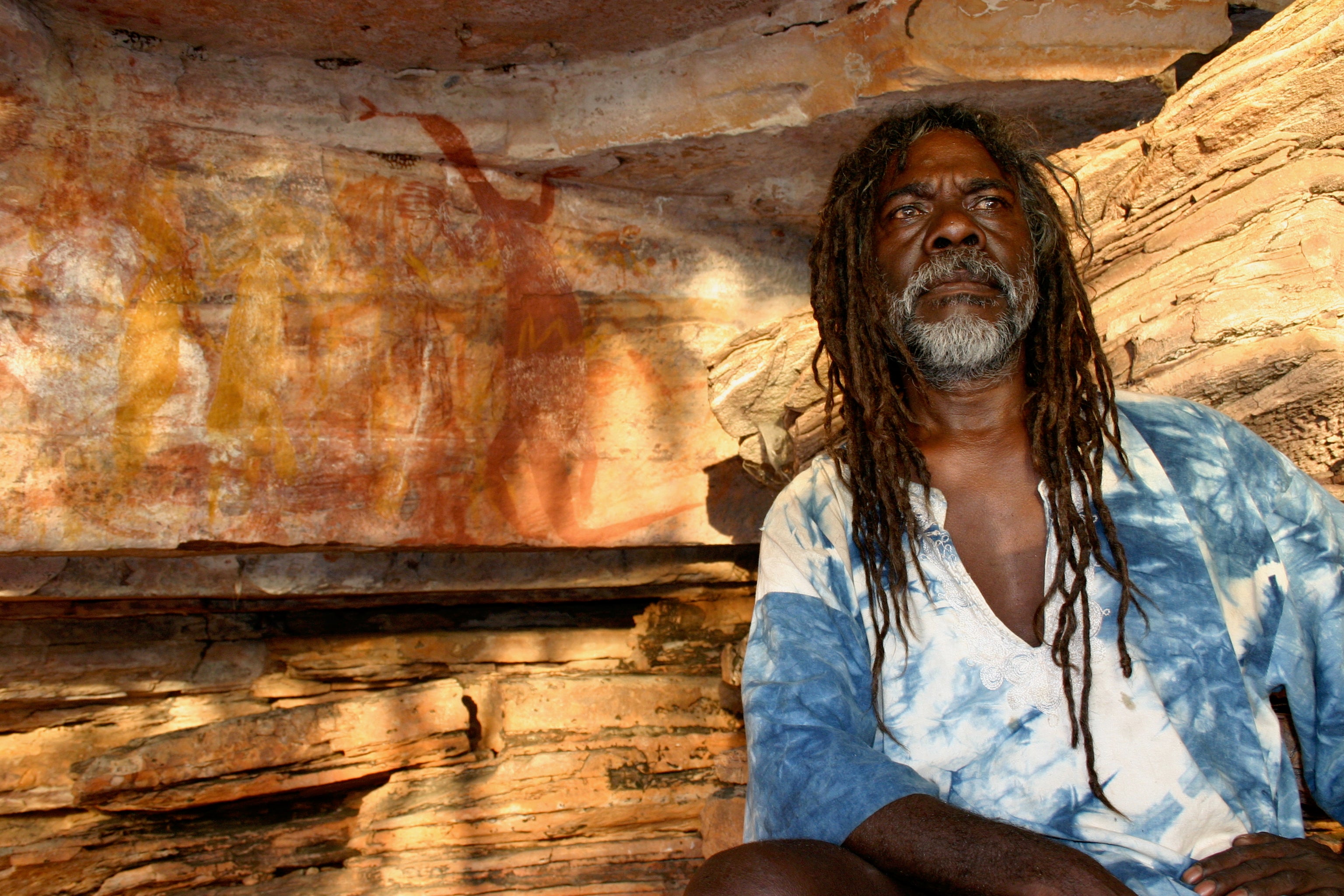 Dean Yibarbuk with rock paintings on reclaimed indigenous land near Kabulwarnamyo in the Warddeken Indigenous Protected Area, Arnhem Land, Northern Territory, Australia. Photo © Toby McLeod
Dean Yibarbuk with rock paintings on reclaimed indigenous land near Kabulwarnamyo in the Warddeken Indigenous Protected Area, Arnhem Land, Northern Territory, Australia. Photo © Toby McLeod
“Old people, listen to me! We are here!” Dean Yibarbuk calls out as he ambles in his worn flip-flops through the knee-high grass amid the sparse trees of the wooded savannah of Australia’s Top End. “We have come to look after the country,” he tells his ancestors who take care of the vast expanses of their traditional territory.
A Gurrgoni man, a Traditional Owner of the country that is now within the Warddeken Indigenous Protected Area in Australia’s Northern Territory, Yibarbuk tosses a lit match on the ground and watches the flames begin to nibble at a patch of grass. Drawing from the deep well of his people’s ancestral knowledge of fire, he continues on his meandering path, methodically choosing the apt spots to light the grassy understory. He is fulfilling his ancestral responsibility – looking after the country for his people and for future generations.
 Aboriginal cultural burning practices of lighting small, low-intensity cool fires before the vegetation gets too dense and dry later in the season, ensures health of the land and its peoples. Photo © Gleb Raygorodetsky.
Aboriginal cultural burning practices of lighting small, low-intensity cool fires before the vegetation gets too dense and dry later in the season, ensures health of the land and its peoples. Photo © Gleb Raygorodetsky.
The tropical savannahs of Northern Australia’s Arnhem Land are one of the most fire-prone landscapes on earth. Over millennia, the Aboriginal peoples developed cultural burning practices that sustained the health of the land and its peoples. As they walked the country, they lit small, low-intensity cool fires before the vegetation got too dense and dry later in the season. Small mammals and ground-nesting birds would easily escape the fires and eventually return to the burned area. Traditional fire management created and sustained a patchy mosaic of diverse habitats nourishing the rich biocultural diversity, which embraced wallabies and worldviews, soils and songs, lizards and languages. Aboriginal cultural burning sustained the wellbeing of Australia’s Aboriginal peoples while maintaining, and even enhancing, biological diversity and the ecosystem services they depended on.
The infectious diseases spread in the wake of European colonization of the continent, along with the government policies of assimilation, relocation, and settlement, decimated Aboriginal populations across Australia. As a result, by the beginning of the 21st century, Aboriginal traditions of cultural burning had largely disappeared from the continent, leaving the vast swaths of tropical savannahs increasingly vulnerable to the out of control, late-season infernos. The scorching blazes that for months in 2019 and 2020 swept across thousands of square kilometers of savannahs in Australia, devoured everything in their path—soils, vegetation, birds and animals unable to escape. They also produced more than 3% of Australia’s annual Green House Gas (GHGs) emissions.
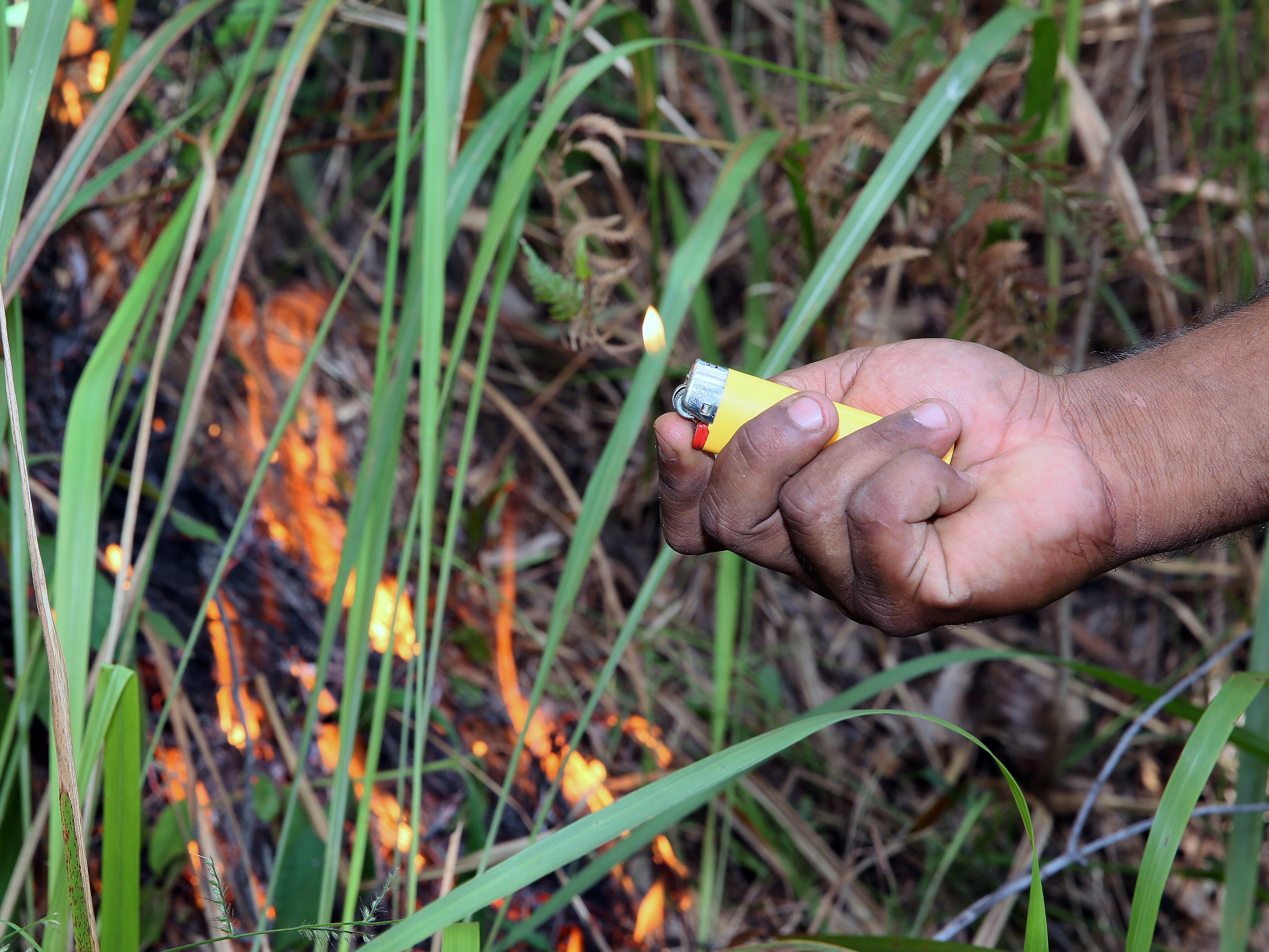 Aboriginal cultural burning practices of lighting small, low-intensity cool fires before the vegetation gets too dense and dry later in the season, ensures health of the land and its peoples. Photo © Gleb Raygorodetsky.
Aboriginal cultural burning practices of lighting small, low-intensity cool fires before the vegetation gets too dense and dry later in the season, ensures health of the land and its peoples. Photo © Gleb Raygorodetsky.
Yibarbuk and his people have led the way in reviving cultural burning as part of their ancestral responsibilities for looking after their country. The innovative West Arnhem Land Fire Abatement (WALFA) project was launched in early 2000s by the North Australia’s Indigenous Land and Sea Management Alliance (NAILSMA). Over the two decades of collaboration between Traditional Land Owners and researchers, supported through carbon markets, the WALFA project has clearly showed the value of restoring Aboriginal peoples’ traditions of caring for the country. Revitalizing cultural burning has revived the region’s biodiversity, restored ecosystem services, enhanced Aboriginal peoples’ wellbeing, and mitigated climate change by reducing green house gas (GHG) emissions.
Since traditional owners resumed their cultural practices of caring for the country with fire around 2006, the GHGs emissions in the region have dropped significantly and biodiversity is beginning to return. The program has been able to create and maintain over 200 local jobs for Aboriginal rangers each year. The lessons and success of this program have led to the inclusion of Indigenous fire management into Australia’s Carbon Farming Initiative (CFI), a carbon offsets scheme, which, among other things, allows traditional land owners to earn carbon credits through the reduction in GHG emissions using cultural burning. The unprecedented 2019-2020 fire season in Australia makes revival of cultural burning traditions more imperative than ever.
“The old people have passed,” says Yibarbuk, “but we need to find new ways to look after our country.”
Reconciling with All Our Relations
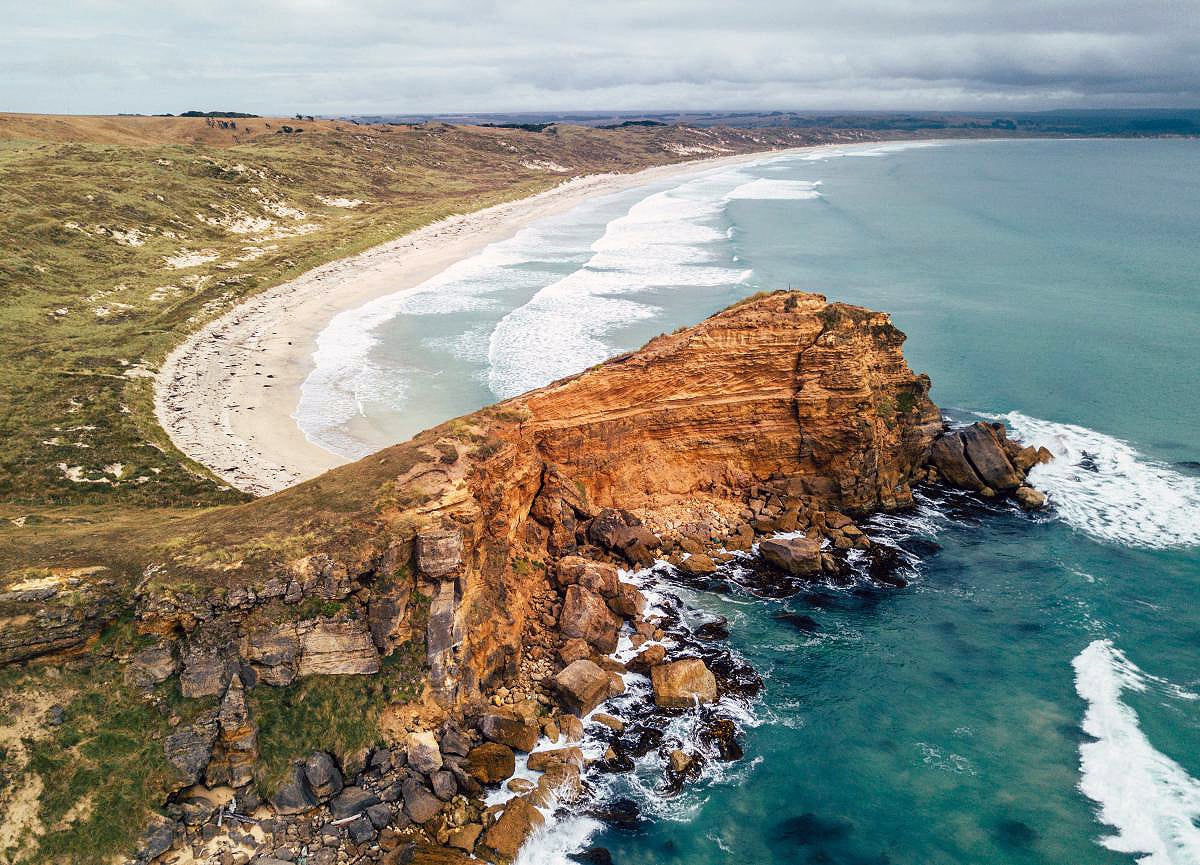 Photo © Maui Solomon.
Photo © Maui Solomon.
The tree is beaming – bruised into its bark is an ancient dendroglyph of a human figure with a heart-shaped face grinning from ear to ear.
“Our ancestors, karapuna, were very intelligent people, living simple but happy lives,” says Maui Solomon, the Chairman of Hokotehi Moriori Trust and a barrister, describing Rākau Momori – the images of Moriori ancestors etched into the “memorial” kōpi trees. “They mastered the art of a balanced existence with the environment and all their relatives--beings of the land and sea. Their story holds many lessons for us,” Solomon says.
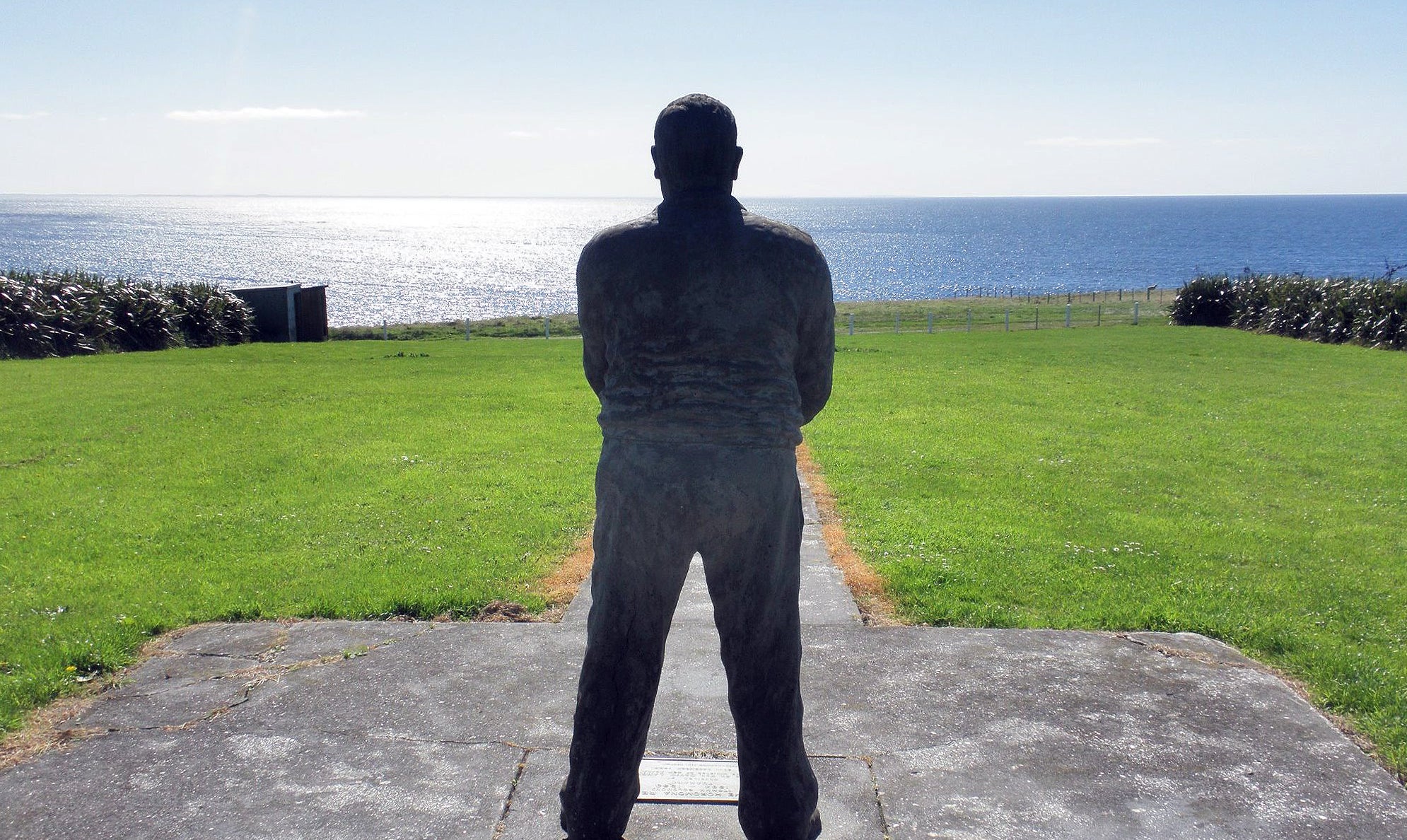 Tommy Solomon’s statue on Rēkohu. Photo © Maui Solomon.
Tommy Solomon’s statue on Rēkohu. Photo © Maui Solomon.
The Indigenous Moriori live on Rēkohu, or the Chatham Islands in English, almost 800 km southeast from the mainland Aotearoa, or New Zealand. Their origin stories tell of first voyaging canoes, or wakas, arriving from Central Polynesia and from Aotearoa around the same time as Aotearoa was settled by Māori some thousand years ago.
During the original settlement of Rēkohu, Moriori brought with them the evergreen kōpi tree, as a source of food and shelter. Kōpi berries and nuts, when prepared properly, were an important source of nourishment. Groves of kōpi trees provided the much-needed shelter on the wind-swept Rēkohu, or "Misty Sun” in English.
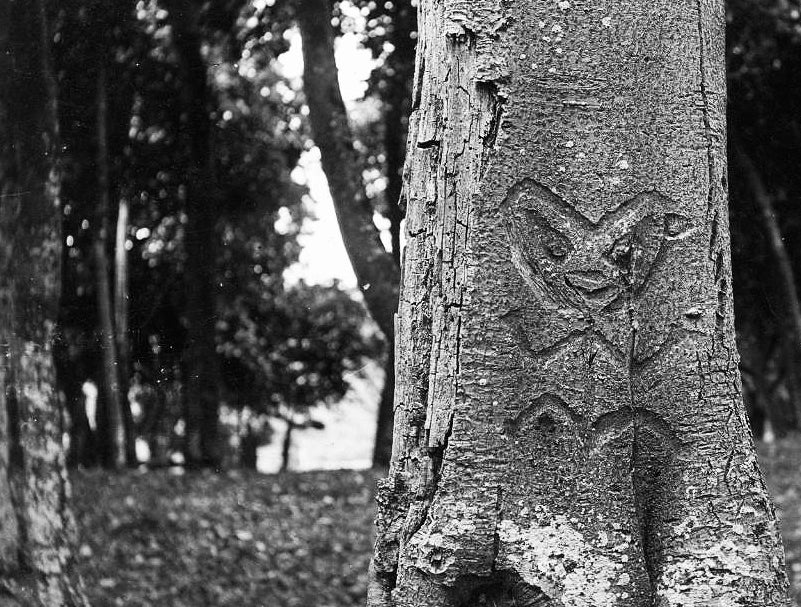
Rākau Momori – images of Moriori ancestors etched into the “memorial” kōpi trees. Photo © Maui Solomon.
“Magnificent cathedrals,” this is how Solomon describes groves of kōpi trees – their immense canopies suspended over understory-free forest floor, dimly lit by occasional shafts of light piercing the interlaced crowns. Often located near ancient living places, burial sites, and middens, the few remaining kōpi groves, Solomon explains, serve as a reminder of how karapuna used to live before their “discovery” in 1791 by the Chatham, a British ship that had been blown off course to Rēkohu.
The whaling and sealing crews that followed the Chatham to Rēkohu encountered a peaceful people whose sophisticated knowledge and traditions—rooted in reverence for Nature in all of its interdependent ecological, cultural and spiritual manifestations—sustained their wellbeing without overexploiting the island’s biodiversity. A fundamental tradition guiding Moriori lives for centuries has been the covenant of peace, known as Nunuku’s law.
“It’s a peaceful existence in the most holistic sense,” Solomon explains. “Not only peace between humans, mind you, but peace with the land, peace with the sea, peace with the air, peace with all our relations.” For six centuries, Moriori have obeyed this covenant.
According to Moriori lore, a respected Moriori spiritual leader named Nunuku-whenua, fed up with the violence between Moriori, called upon the warring tribes to uphold their ancestral teachings of peace that forbade killings and cannibalism.
“From now and forever, never again let there be war,” Nunuku proclaimed. Heeding his request, the Moriori stopped their hostilities, gave up their own power to end life through making war, and placed it into the hands of their gods. Since then, the people would resolve any dispute—be it over resources, relationships, or boundaries—only through ritualized combat with wooden staffs twice the thickness of a thumb. Upon first blood drawn, fighting would cease, and honour would be satisfied.
The greatest test of Nunuku’s law came in 1835, when 900 members of the Ngati Tama and Ngati Mutunga Māori tribes, originally from Taranaki, decided to invade Rēkohu, attracted by its abundant resources and in the knowledge that the islands’ peace-loving inhabitants would not be able to defend them. Soon after their arrival, the Māori began killing and enslaving the peaceful Moriori. While young Moriori men wanted to fight back against the invaders, the elders insisted that Moriori must uphold their sacred covenant of peace with the gods and protect their mana, or honour. They maintained that their customary law of peace was a moral imperative and that they would never return to war and killing. Instead, they must offer peace and friendship to the newcomers, insisted the elders, and share with them the Island’s many gifts.
Moriori upheld the Nunuku’s law and, as the colonial government stood by, over 1900 of them were either killed by Maori, perished in enslavement, died of introduced diseases, or succumbed to despair. By 1862, only 101 Moriori survived. In 1933, when the last known full-blooded Moriori died, the Moriori people were officially declared extinct. He was Tame Horomona Rehe, also known as Tommy Solomon, Maui Solomon’s grandfather.
His descendants and other Moriori have fought political and legal battles since the mid-1980s to be recognized as the original Rēkohu people, who have maintained continuous cultural identity for centuries. In 2020, Moriori signed an historic deed of settlement with the Crown for $18M in reparations; the Crown also agreed to return Crown-owned lands to Moriori, protect their sacred places, restore traditional Moriori place names, and allow the people to reclaim their rightful role in the management of the islands’ natural resources. Restoring kōpi groves, and associated Rākau Momori dendroglyphs, has been one of their priorities.
“It’s not just a picture on a tree for us,” says Solomon, “It’s an ancestor and a connection to the past that sustain us spiritually.” Moriori have an obligation and a commitment to “put the cloak back on the land” as Solomon describes it. “Kōpi groves shelter the land, protect it from erosion, attract moisture, bring the birds back. All of this is linked to our cultural renaissance and all of these things are growing together.”
Solomon has a lot of respect for his ancestors’ decision not to return to killing and fighting. “It was no longer the way for them to exist as human beings,” he reflects. ”Even though I battle against it in my mind from time to time, I still respect them for it. They've been there and would not be going back. It has worked for them on this island, their home that they have successfully looked after for hundreds of years and thrived.”
At the inaugural 2011 Me Rongo Congress for Peace, Sustainability and Respect for the Sacred held at the Kōpinga Marae on Rēkohu, Moriori’s unbroken commitment to Nunuku’s law was reaffirmed through the Me Rongo declaration. Moriori renewed their commitment to live together on Rēkohu in peace and respect, to share the resources of the land and the sea, and to inspire the next generation to learn about, and uphold the values and wisdom of, their ancestors.
Way Forward
“Culture and Nature have been artificially separated for too long,” reflects John Scott, a descendant of the Iningai people of Central Queensland in Australia and a Senior Program Manager of the Secretariat of the Convention on Biological Diversity (CBD). “Only by recognizing their intrinsic value and interdependence can we hope to pave the way forward, toward living in harmony with Nature.”
In his opening remarks to the North American Dialogue on Biocultural Diversity in Montreal in 2019, Scott stressed that the Convention’s work toward achieving its vision of a humanity “Living in Harmony with Nature,” which must be guided by the Indigenous Peoples and firmly based on reconciling culture and Nature within CBD’s post-2020 Global Biodiversity Framework.
The Dialogue, co-organized by the CBD Secretariat, UNESCO, and the Center for Indigenous Conservation and Development Alternatives (CICADA) on the traditional territory of Kanien’keha:ka Nation in Montreal, brought together over 100 Indigenous experts and their partners and allies from across North America, united by their passion and concern for Nature and culture. A significant outcome of the workshop was the Atateken Declaration (Atateken means ‘brothers and sisters’ in the Kanien’kéha (Mohawk) language, and implies fraternity and peace). Also called the North American Regional Declaration on Biocultural Diversity, it calls upon governments and international conservation organizations to:
- diligently work toward removing any conceptual and practical separation of biological and cultural diversity from conservation, sustainable development, and decision-making;
- create and sustaine conditions for mobilizing Indigenous knowledge by the knowledge holders to guide conservation, sustainable development, and decision-making; and,
- strengthen actions and strategies that link biological and cultural diversity through the holistic lens of relationships between humans and Nature.
Peacemaking
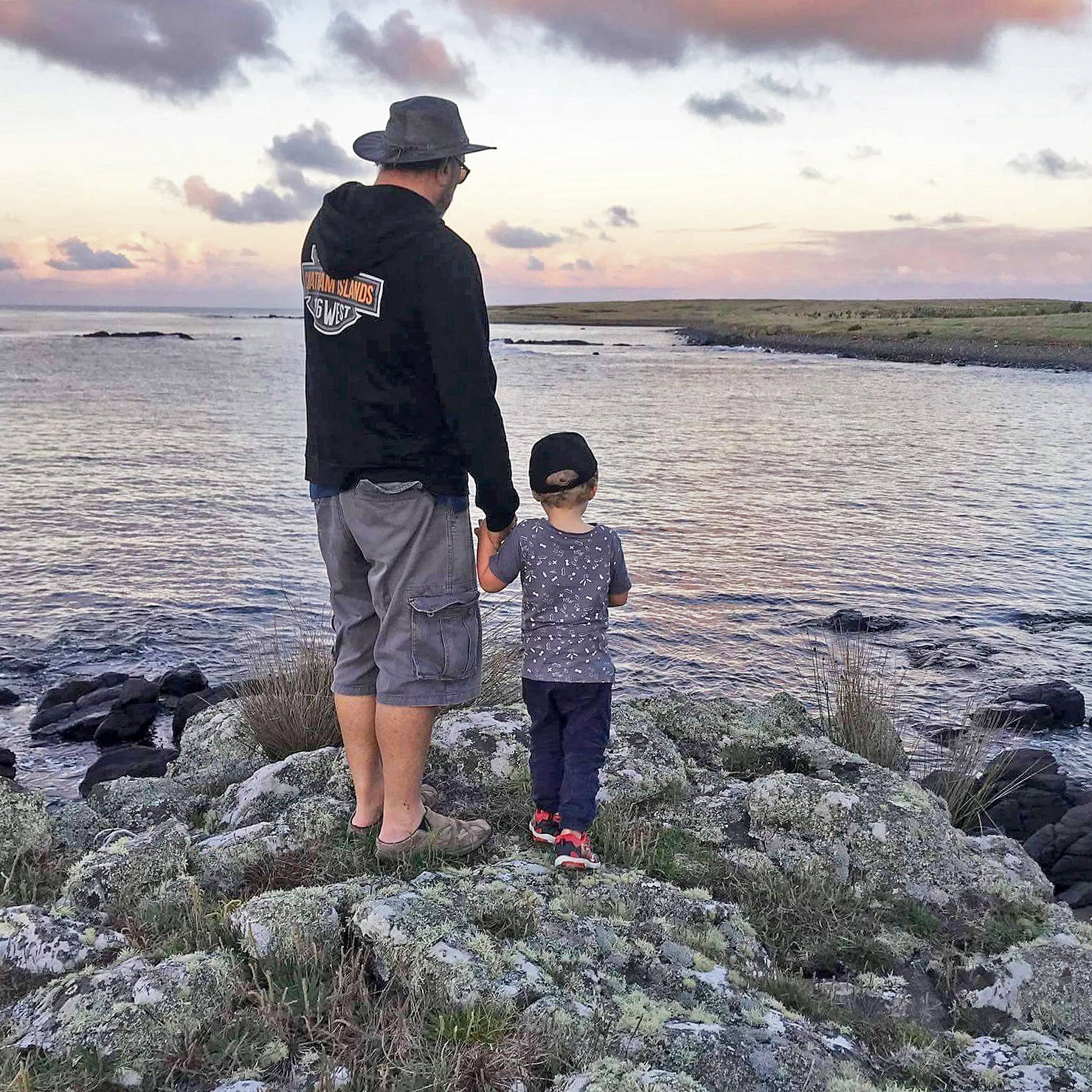 Maui Solomon with his moko, Carter John Tamarau-Ariki Solomon, on Rēkohu. Photo © Maui Solomon.
Maui Solomon with his moko, Carter John Tamarau-Ariki Solomon, on Rēkohu. Photo © Maui Solomon.
“Let's face it, humanity has been the most destructive virus this planet has ever known,” says Maui Solomon reflecting on the COVID-19 pandemic and the lessons that his people, a tiny but resilient nation from a remote Pacific archipelago, might offer to humankind trying to reimagine its relationship with the planet. “But, would we acknowledge it? Of course not! Because we are so caught up in our right to take as much as we want from this planet until there is nothing left. We need to make peace with our planet. Unless we do, the human species won’t have a future.”
According to Solomon, Moriori’s ancient covenant of peace offers a vision of the world where humans live respecting each other and their environment. “The journey we are on, as a people,” he says, “Is to become a more sustainable island by looking at traditional Moriori ways as well as modern day science. All of this blends into how we, as a human species, learn to survive and be more sustainable in places we inhabit. Today, we are trying to understand and reclaim that, relearn what it means and how it applies in the modern-day context. Peace is a worldwide aspiration, even though we, as humankind, don't seem to be able to achieve it. The lesson our karapuna, ancestors, share with us is simple: never ever give up hope! This is a powerful message to carry forward.”
Solomon talks about taking his six-year old moko (short for mokopuna, or grandson in Moriori) fishing at sea and planting trees around Rēkohu. “I want him to know that as the world is crumbling,” says Solomon, “we are doing everything we can to give this gift to him. You can still go to those reefs and get our traditional foods because we have looked after that resource. You can still grow beautiful trees on the land because we looked after the land. We have everything here that's needed to sustain life. If you want to live well and happily, this is what we've left you. This is our gift to our children and grandchildren.”
--Dr. Gleb Raygorodetsky is a biocultural diversity expert, with over two decades of experience working for, collaborating with, and writing about the world’s Indigenous Peoples. In his award-winning book, The Archipelago of Hope: Wisdom and Resilience from the Edge of Climate Change, he documents how the inextricable relationship between Indigenous cultures and their territories forms the foundation for climate change resilience around the world. You can find him on Facebook, Twitter, and Instagram.

